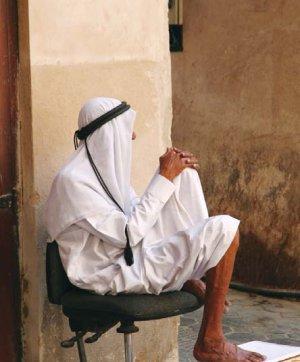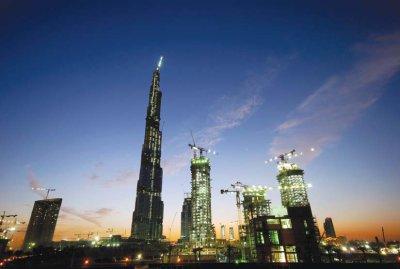Bridging the Gulf

By Gordon Jones
New centers of wealth
Most descriptions of Arabia these days command superlatives: The world’s tallest tower; the world’s first 7-star hotel; the world’s three largest man-made islands, shaped as palm trees. The list goes on and makes the eyes boggle, and prospective suppliers salivate. According to the Middle East Economic Digest, the current level of Gulf projects planned or underway is a staggering US$2 trillion.
Arriving in cities such as Dubai or Doha brings any visitor face to face with a construction bonanza on a massive scale, and an immediate sense of the new found wealth and confidence of the Gulf Arabs.
Formed in 1981 (in the wake of the Iranian revolution and “second oil shock”), the Gulf Cooperation Council (GCC) comprises Bahrain, Kuwait, Oman, Qatar, Saudi Arabia & United Arab Emirates—former tribal territories in the Arabian peninsula, blessed by geography to be sitting on perhaps 40% of the world’s oil reserves, and facing a strident, populous Iran across the strategic Persian Gulf, just 34 km at its narrowest chokepoint in the Straits of Hormuz.
During recent years, the combined forces of visionary Sheikhs, ‘black gold’ dollars and WTO momentum have resulted in tremendous progress across the region in terms of market liberalization and modernization. Cooperative endeavor has served the GCC well, creating a loose common market and plans to introduce a common currency by 2010.
With oil now trading well above US$120 a barrel, the GCC region is flush with cash—a far cry from an equally dramatic low point of less than US$10 a barrel just a decade before—and is using its oil windfall to build a more diversified future beyond oil. With a rapidly growing population (now close to 40 million, with approximately 50% under the age of 20), GCC states are investing heavily in infrastructure, education and acquiring technology and know-how for future competitiveness.
The topical Sovereign Wealth Funds are but one significant part of a burgeoning mix of public and private wealth within the Gulf region, which clearly cannot be consumed only within the Arab realm. Given the size of the pot, and perhaps certain wariness about Western markets, the Gulf States are increasingly looking east for new trade and investment opportunities.
| Gulf At A Glance | Area sq.km |
Population million |
GDP US$ billion |
GDP $ per capita |
| Bahrain | 655 | 0.8 | 16 | 21,330 |
| Kuwait | 17,820 | 3.2 | 96 | 30,188 |
| Oman | 212,460 | 2.6 | 36 | 13,609 |
| Qatar | 11,437 | 1.0 | 54 | 57,000 |
| Saudi Arabia | 2,149,690 | 23.9 | 347 | 14,543 |
| United Arab Emirates | 83,600 | 4.5 | 163 | 36,222 |
| Total GCC | 2,475,662 | 36.0 | 712 | 172,892 |
| Source: Middle East Economic Digest; Note: GDP figures based on 2006. | ||||
Dependence and development
So, what of Japan’s relationship with Arabia? In 2007, total trade between Japan & GCC reached US$120.8 billion, with GCC contributing 3% of Japanese exports but almost 16% of imports, predominantly oil and gas. GCC ranked as the number two importer to Japan (after China); with Japan being its number one export market.
Indeed, with more than 90% of Japan oil demand coming from the Gulf region including Iran, no other major industrialized country is as strategically (and dangerously) dependent on this region for its national energy security. Conscious of this, the Japanese government is primarily concerned to ensure a stable supply of oil and gas, and endeavors to steer as non-confrontational a course as possible under the dominant shadow of US foreign policy towards the Middle East region, which remains a challenge in relation to markets such as Iran.

For the Japanese private sector, the goal is to take advantage of ongoing export trade with key Middle East markets, such as Saudi, Iran and the UAE. Such trade was traditionally channeled through trading companies or local agents, and in more recent years through more direct presence, typically utilizing the commercial and logistical benefits of designated “free zones” such as Jebel Ali in Dubai, which allow foreign companies to set up and operate without the need for local majority partnerships or sponsorship arrangements.
Major Japanese corporations such as Sony, Panasonic and Toyota have a long and well established presence in the region, where they are respected brands with strong market share following among Middle East consumers.
Japanese heavy industrial and trading companies have had mixed fortunes in Gulf markets, being more prone to local politics and parochial interests, especially in the key sectors of petrochemicals, construction and real estate development. Nevertheless, Japanese companies and technology are currently actively engaged in some of the major projects across the region.
With such existing relationships, strong recognition of Japanese technological prowess and its standing as the world’s second largest economy, Arabs naturally have Japan in mind as an investment destination. As Yoshiki Hatanaka of the International Development Center of Japan commented in a recent article in Sekai journal, Japan should have “strong cards to play” in appealing to Arab investors looking for a stable, technologically advanced, “friendly navigator” in Asia, but needs to be more active in its efforts to attract Middle East investment. Reflecting Japan’s generally low level of inward Foreign Direct Investment (FDI), Japanese authorities have hardly been enthusiastic in welcoming Arab investors. As one frustrated government officer commented off the record, Japan’s authorities lack “enough open mindedness to import Middle East oil money” and remain “too rigid” compared to other countries now starting to benefit from the flow of Arab capital.
Competing for friendship
To date, the majority of Arab investments in Asia have been directed towards countries such as Malaysia, Indonesia, Singapore (offering a more natural Islamic affinity and openness to Arab investment approaches) and increasingly to China, where energetic and high level Gulf-Chinese relationship building efforts are showing concrete progress in terms of trade and investment initiatives.
In contrast, ex-Prime Minister Abe toured the Middle East in April 2007 (accompanied by a large Japan Business Federation delegation of more than 170 business people), but it is unclear what the trip served to achieve other than the “symbolic gesture” of demonstrating Japan’s strong interest in Middle East oil.
The recent years of rapid growth have not been without negative aspects, namely mounting inflation across the region, most notably in the UAE and Qatar (in excess of 10%), where rising costs are an increasing concern for companies and the high proportion of foreign nationals working in Gulf countries. In attempts to control inflationary excesses, speculation now centers on whether the GCC governments will move away from their long-standing commitment to a dollar peg for their national currencies (with Kuwait already having done so in May 2007).

Doing business in the Gulf undoubtedly has its risks and challenges, with each of the states having its own character and foibles. As with any emerging market undertaking, making headway requires effective local connections and capability, together with appropriate regional awareness, cultural sensitivity and a modicum of patient flexibility in pursuit of longer term prosperity.
The Gulf today is enjoying its Golden Age: an exciting blend of tradition and modernity, where grand designs are matched by the confidence and coffers to make great things happen. As its wealth accumulates and current projects usher in new phases of development, the GCC is clearly destined to play a more active role in the wider world. Japan seems to be recognizing this and hopefully it is not too late for some strong bridges to be built.
It remains to be seen just how significantly Arab capital will shape Asian markets during the coming years and to what extent Japan will be either actor or spectator in this new dynamic. In a recent study, the McKinsey Global Institute estimates that the GCC states may have as much as $5 trillion of new funds to invest in global capital markets through 2020 and that Asia’s share will rise from 10% today to 20% by 2020. That’s a lot of money for anyone to ignore and an exciting ride ahead for proactive countries and companies along ‘The New Silk Road.’ JI
Gordon Jones spent 18 years with a major Japanese MNC in various emerging market business development roles, most notably as the Managing Director for Middle East & North Africa region, based in Dubai from 1998-2007. He is currently based in Tokyo and focused on promoting cultural and commercial dialogue in the Asia region.





